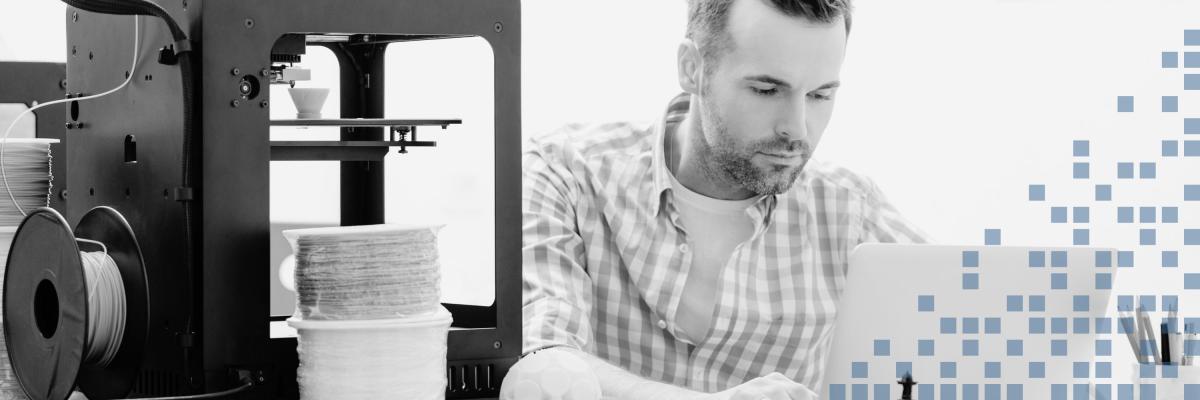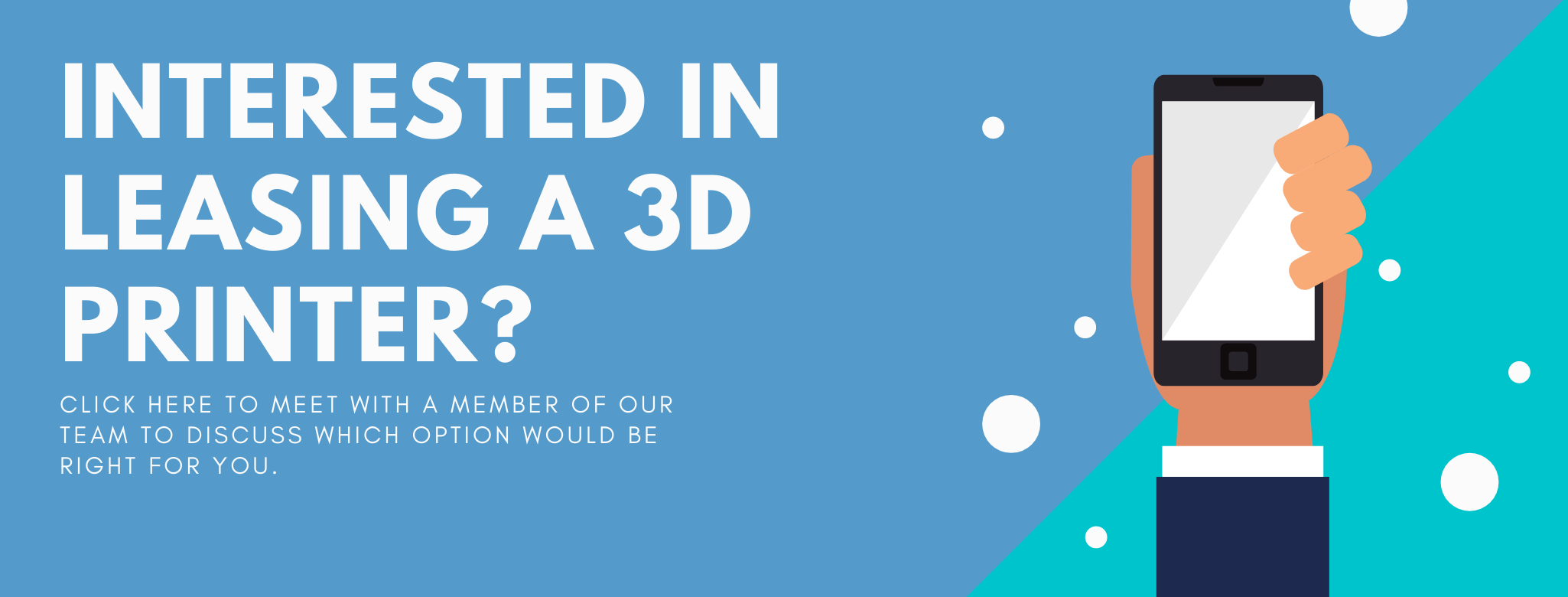
Who remembers as a kid, getting excited for any new movie with the word ‘3D’ attached to it?
Something was fascinating about how the flimsy blue and red paper glasses made the movie come to life right before your eyes.
3D movies were more engaging and interactive than their 2D counterparts.
Luckily, growing up did not diminish the excitement of 3D projects.
Thanks to advancing technology, this 3D experience has migrated from the big screen to your office or classroom via 3D printers.
What is a 3D printer?
3D printers allow users to print three-dimensional objects. The printer takes a digital file and converts it to a language that the printer can understand. Then the printer uses a material called filament to produce the object.
Much like how copiers/printers use toner or ink to produce prints, 3D printers use a filament to create 3D objects. Filaments come in a wide range of colors, so you shouldn’t have a problem finding your desired color.
By adding an interactive element, 3D printers can accelerate employee or student engagement within the business or education sector.
Are 3D printers right for your business?
3D printers are utilized in the education and business environment.
In the education sector, 3D printers are becoming increasingly popular due to the endless learning opportunities it produces.
Some brands, like Y Soft, also offer lesson plans. The Y Soft’s BE3D Academy provides preplanned lessons to maximize your involvement of the 3D printer, taking away the stress of creating lessons around a new device.
With the opportunities to engage students and enhance their learning experience, those in the education sector are perfect fits for 3D printers.
In the business environment, 3D printers can be used in several different ways, such as:
- Creating parts that will be used in products
- Print prototypes of an item that will be later manufactured via another process
- Printing products
Businesses with the need to print three-dimensional parts, prototypes, or products are a perfect fit for 3D printers.
While we believe 3D printers can add value and an increased amount of engagement within a school or office, there are still pros and cons that should be evaluated.
Pros of a 3D printer?
Like any piece of machinery, the pros and cons should be considered before investing in the product.
Some of the benefits of 3D printers are:
- Engage teammates or students
- Interactive form of learning
- Visually see prototypes, projects, or products
- Curated lesson plans for the education environment
- Lease options available
Cons of a 3D printer?
While the benefits of the machine are enticing, one should consider the cons as well to determine if this investment is right for you.
Some business types don't need 3D printers, such as those that do not sell a tangible product or don’t need prototypes, such as support services or insurance.
Some additional things to consider are:
- 3D printers cost money; are you ready to invest?
- Adult supervision is recommended, although Y Soft has constructed a locked and enclosed 3D printer for maximum safety
- Adopting a new device takes training
- You’ll need to plan for the prints; they take time
New devices take time to learn. You’ll have to train those who will be using the machine. While it’s not rocket science, you will have to put effort into learning the new device.
Additionally, due to the nature of printing an object, 3D printers are not fast. It's common for a file to take hours to print. The solid filament used will need to be heated to a liquid state before constructing the object. This will need to be planned for.
All of these factors will need to be taken into consideration. For some, the benefits will far outweigh the cons, while for others, right now might not be the right time to invest.
How much does a 3D printer cost?
The cost of a 3D printer depends on the quality and the brand. The prices range from $100s to $1,000s.
You could go to Amazon and buy a 3D printer in the $100-$200 range. However, these likely won’t be suitable outside of personal use.
For businesses or schools, this should be an investment, not a search for the printer with the lowest cost.
Besides quality, the price also depends on several other factors, such as:
- The amount of filament needed
- Size of objects printed
- Comprehensive software solution
- Are you looking to purchase outright or lease the machine?
The intended objects or projects that you will be using the 3D printer for should be considered as part of the total cost. If you plan to use the printer to print small objects, that will cost less.
Vice versa, large prints are more costly. Not only does it use more filament, sometimes the printer will need to print supports to keep the object upright during the process, using more filament.
Some projects require different parts to be printed separately, then manually assembled later.
All of these factors should be calculated as part of the total cost.
Want more information on 3D printers from Y Soft?
After reading this article, you should have a better understanding of 3D printers. If you are interested in learning more, we recommend checking out these articles next:

